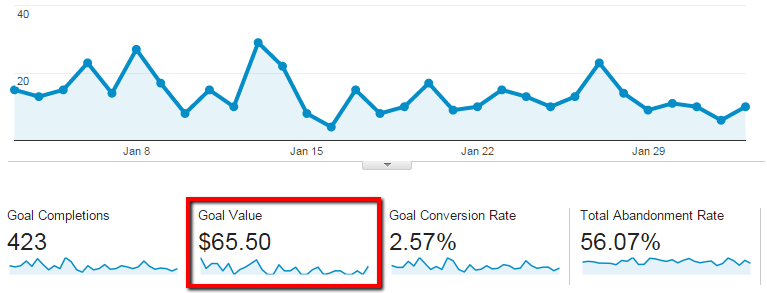Discover What Data Is Google Analytics Goals Unable to Track
Discover What Data Is Google Analytics Goals Unable to Track
Blog Article
Revealing the Blind Attractions: Understanding What Google Analytics Goals Can not Gauge
In the realm of electronic analytics, Google Analytics stands as an effective tool for monitoring and analyzing on-line individual communications. However, amid its durable capabilities, there exist dead spots that typically escape dimension. Comprehending what Google Analytics objectives can not gauge is crucial for gaining a detailed sight of customer actions and involvement. As we dive right into the intricacies of these unseen areas, we uncover a complex web of uncharted areas that hold valuable understandings into user activities and motivations, challenging traditional knowledge and clarifying the limitations of our data-driven understanding.
User Actions on External Operatings Systems
Understanding how users connect on external platforms is critical for enhancing on-line methods. External systems, such as social media networks, recommendation web sites, and on-line discussion forums, play a considerable duty in driving traffic to a firm's website. By examining user habits on these systems, services can obtain important insights right into the effectiveness of their advertising initiatives and the preferences of their target audience.
One secret element of user habits on exterior platforms is the recommendation source. By tracking where the individuals are originating from, businesses can determine which systems are driving one of the most traffic to their website. This details can help business designate their sources better, concentrating on the platforms that produce the very best outcomes.

Offline Conversions and Interactions
Assessing individual behavior on exterior platforms gives important insights right into on the internet strategies; nonetheless, taking into consideration offline conversions and interactions is just as imperative for a comprehensive understanding of a firm's general efficiency. Offline conversions, such as in-store purchases or phone questions, play a considerable role in many businesses' success.

Acknowledgment Beyond Last Click
When diving into the world of electronic marketing analytics, it becomes important to look past the solitary touchpoint of the last click for a more detailed understanding of acknowledgment. While Google Analytics gives valuable insights into individual habits, depending only on last-click acknowledgment can be limiting - what data is google analytics goals unable to track. the original source Acknowledgment models that exceed the last click supply a much more nuanced sight of the client trip, taking right into account all the touchpoints that bring about a conversion
Acknowledgment past the last click enables marketing experts to appoint credit report to different interactions along the conversion course, providing a clearer image of the effectiveness of various advertising and marketing channels. By exploring multi-touch attribution models such as straight, time decay, or position-based attribution, businesses can much better designate their marketing budgets and maximize their approaches for maximum impact.
Recognizing the influence of each touchpoint in the conversion process is critical for making notified decisions and making the most of ROI. By accepting attribution past the last click, services can gain much deeper insights right into client actions and tailor their marketing efforts better.
Cross-Device and Cross-Browser Monitoring

In a similar way, cross-browser monitoring complements cross-device tracking by capturing individual habits as they switch over in between different web browsers. Comprehending exactly how individuals connect with internet sites on various browsers can assist marketers optimize their online experiences to guarantee consistency and performance across various systems.
Qualitative Information and Customer Intent
Recognizing customer intent via qualitative information evaluation is important for creating targeted electronic advertising and marketing methods that reverberate with the requirements and choices of the target audience. Qualitative data offers insights into the 'why' behind customer activities, clarifying inspirations, emotions, and preferences that measurable data alone can not catch. By assessing user comments, remarks, and communications, marketers can uncover beneficial information concerning customer intent, allowing them to tailor their messaging, content, and offerings to much better straighten with what their target market is seeking.
Qualitative information additionally assists in understanding the context in which customers involve with a website or app. This contextual understanding allows marketing professionals to produce even more tailored and appropriate experiences, ultimately driving higher involvement and conversion rates. By diving into customer intent through qualitative news information evaluation, services can gain a much deeper understanding of their target audience, bring about much more reliable advertising strategies that fulfill individuals' assumptions and requirements.
Verdict
Finally, Google Analytics objectives have restrictions in measuring customer behavior on outside systems, offline conversions, attribution past last click, cross-device and cross-browser monitoring, and qualitative data associated with customer intent. what data is google analytics goals unable to track. It is necessary for companies to be mindful of these dead spots in order to supplement their data analysis with various other devices and approaches to obtain an extra detailed understanding of their target market and enhance their total digital advertising and marketing strategies
By examining customer actions on these platforms, services can obtain valuable understandings into the effectiveness of their advertising initiatives and the choices of their target audience.
Assessing user behavior on exterior systems offers useful understandings right into on-line strategies; however, thinking about offline conversions and communications Find Out More is equally imperative for an extensive understanding of a business's general performance.In digital marketing analytics, moving beyond last-click attribution to check out cross-device and cross-browser tracking is necessary for getting an all natural understanding of customer communications throughout different platforms and devices. By evaluating user feedback, remarks, and communications, marketers can reveal beneficial info regarding user intent, permitting them to tailor their messaging, content, and offerings to better line up with what their audience is seeking.
By diving right into individual intent through qualitative information evaluation, services can get a much deeper understanding of their target audience, leading to a lot more efficient marketing strategies that fulfill individuals' needs and assumptions.
Report this page